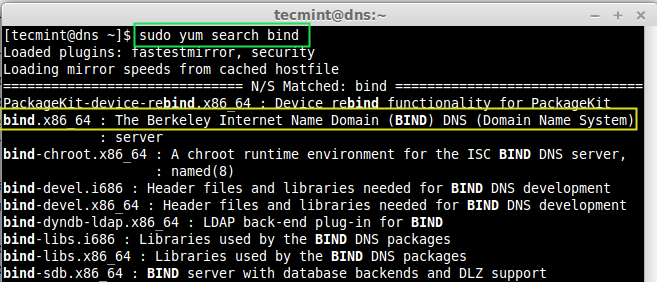Dns Server Configuration In Rhel6 Step By Step Pdf

Jun 24, 2014. Are performing a fresh installation (single server or cluster setup) or upgrading your existing LiveCycle deployment. Commonly used method for load balancing is Round-Robin DNS. Note: In steps 2 and 3, you can also select None and create Deployment Manager or Application Server profiles later. Added installation procedure for Debian. A minor fix to RHEL6 install instructions. DHCP and DNS Server Configuration (networks.conf). Download One Piece Episode 116 English Sub. Developers Guide. Covers captive portal customization, VLAN management customization and instructions for supporting new hardware. May 27, 2009. The first steps. He continues to lead the project. Under the shadow of his mantle are some great folks who never give up and are always ready to help. Thank you to. 3.3.3 Configuration of DHCP and DNS Servers. 3.3.4 Printer. 4.3.1 Installation of DHCP, DNS, and Samba Control Files 110.
Setup Cahing DNS Server in RHEL/CentOS 7 DNS cache servers are used to resolve any DNS query they receive. If the server caches the query and in future the same queries requested by any clients the request will be delivered from DNS ‘ unbound‘ cache, this can be done in milliseconds than the first time it resolved. Caching will only act as a agent to resolve the query of client from any one of the forwarders. Using caching server, will reduce the loading time of webpages by keeping the cache database in unbound server. My Server and Client Setup For demonstration purpose, I will be using two systems. The first system will act as a Master (Primary) DNS server and the second system will act as a local DNS client. Autocad Blocks Of Playgrounds Unlimited.
Master DNS Server Operating System: CentOS Linux release 7.0.1406 (Core) IP Address:192.168.0.50 Host-name:ns.tecmintlocal.com Client Machine Operating System:CentOS 6 IP Address:192.168.0.100 Host-name:client.tecmintlocal.com Step 1: Check System Hostname and IP 1. Before setting up a caching DNS server, make sure that you’ve added correct hostname and configured correct static IP address for your system, if not set the. After, setting correct hostname and static IP address, you can verify them with the help of following commands.
# hostnamectl # ip addr show grep inet. Copy Unbound DNS Configuration Once the file is opened for editing, make the following changes: Interfaces Search for Interface and enable the interface which we going to use or if our server have multiple interfaces we have to enable the interface 0.0.0.0. Here Our server IP was 192. Best And Fairest Software Companies. 168.0.50, So, i’am going to use unbound in this interface. Interface 192.168.0.50 Enable IPv4 and Protocol Supports Search for the following string and make it ‘ Yes‘. Do-ip4: yes do-udp: yes do-tcp: yes Enable the logging To enable the log, add the variable as below, it will log every unbound activities.
Logfile: /var/log/unbound Hide Identity and Version Enable following parameter to hide id.server and hostname.bind queries. Hide-identity: yes Enable following parameter to hide version.server and version.bind queries.
Hide-version: yes Access Control Then search for access-control to allow. This is to allow which clients are allowed to query this unbound server. Here I have used 0.0.0.0, that means anyone send query to this server. If we need to refuse query for some range of network we can define which network need to be refuse from unbound queries. Access-control: 0.0.0.0/0 allow Note: Instead of allow, we can replace it with allow_snoop this will enable some additional parameters like dig and it support both recursive and non recursive. Domain Insecure Then search for domain-insecure.
If our domain is works with DNS sec keys, we need to define our server available for domain-insecure. Here our domain will be treated as insecure.
Domain-insecure: 'tecmintlocal.com Forward Zones Then change the forwarders for our requested query not fulfilled by this server it will forward to root domain (. ) and resolve the query. Forward-zone: name: '.' Forward-addr: 8.8.8.8 forward-addr: 8.8.4.4 Finally, save and quit the configuration file using wq! After making the above configuration, now verify the unbound.conf file for any errors using the following command. # unbound-checkconf /etc/unbound/unbound.conf. Check DNS Cache Locally Did you see in the above output, the first query taken almost 262 msec to resolve and the second query takes 0 msec to resolve domain ( india.com).